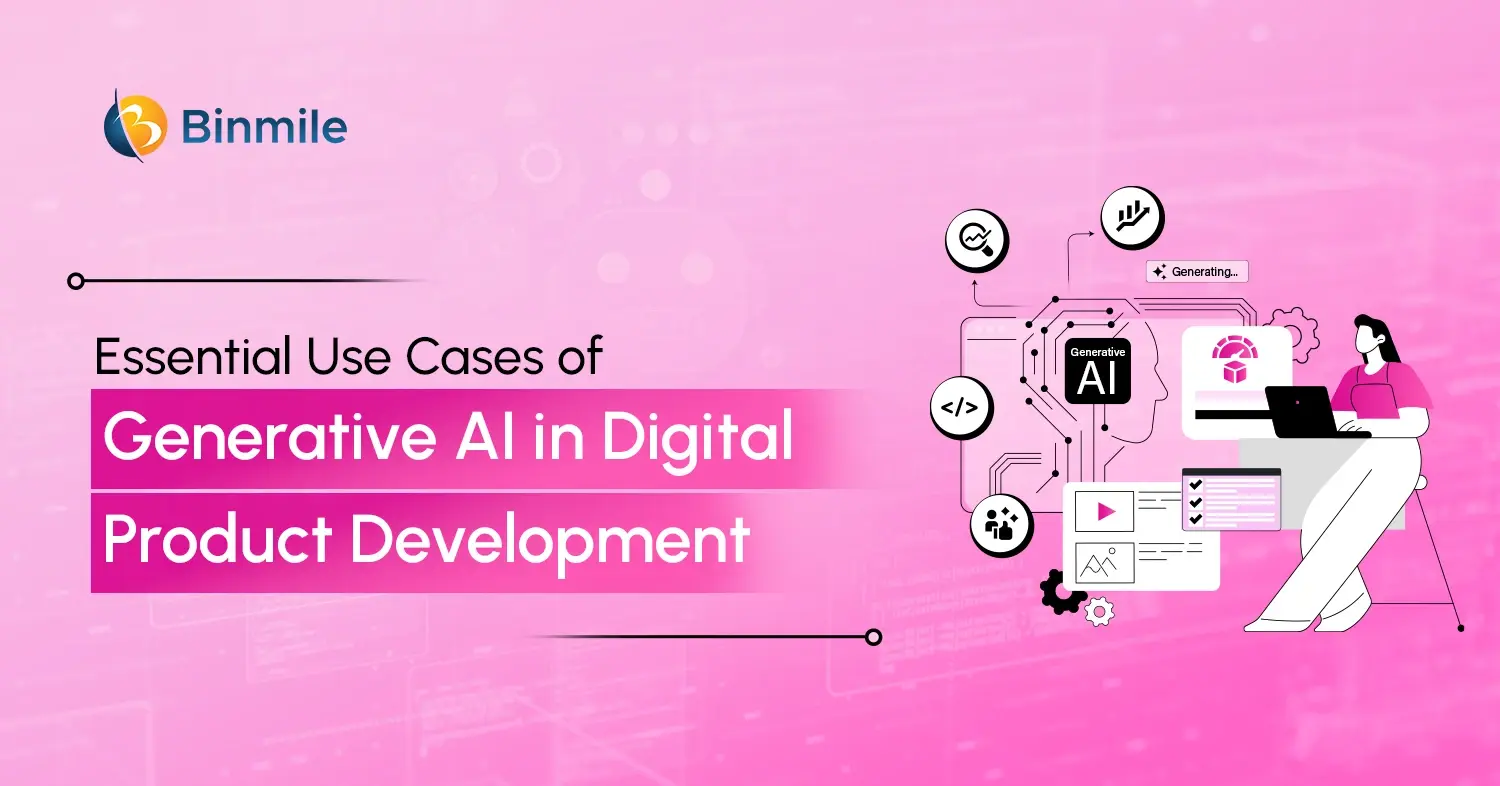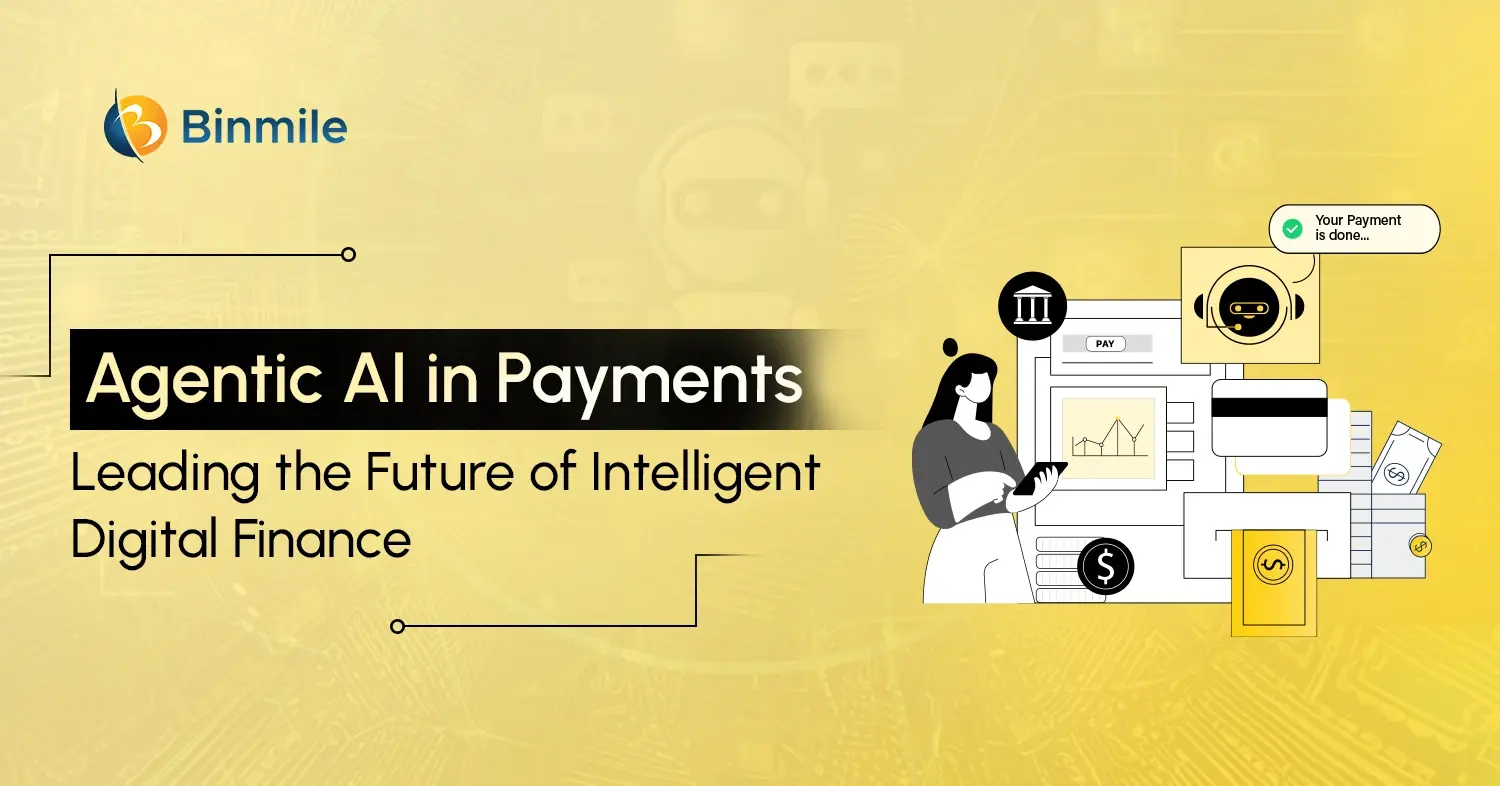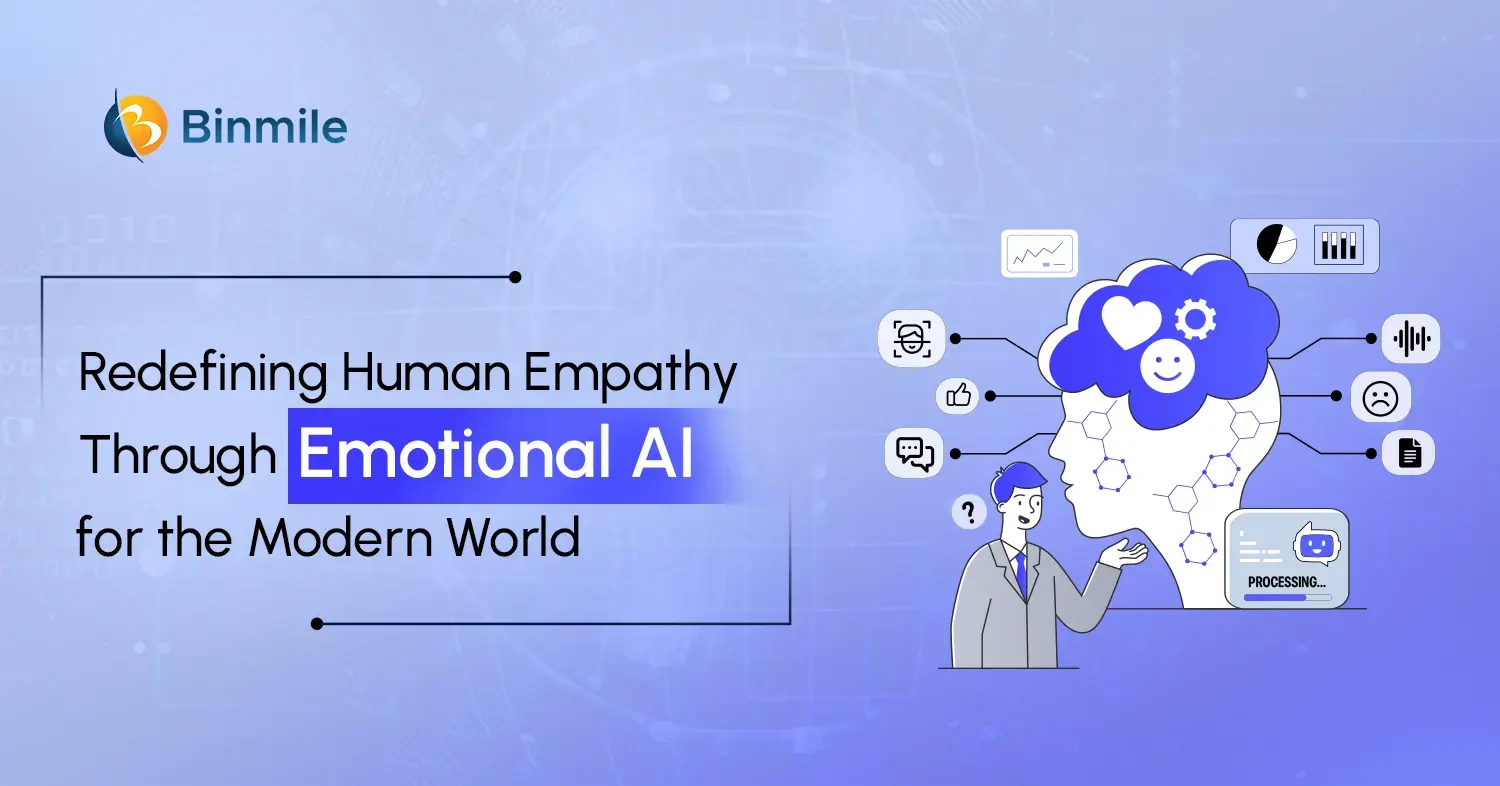- 7 difference between Generative AI and Predictive AI
- all about generative AI and predictive AI for business
- Benefits of Generative AI to Business
- difference between generative AI and predictive AI
- Generative AI vs Predictive AI
- How does Generative artificial intelligence work?
- how to implement generative ai
- how to implement predictive ai
- Predictive AI Benefits to Business
- Predictive vs Adaptive Development
- What is Predictive AI?
With the latest and innovative developments in Generative AI tools such as ChatGPT, DeepSeel, Grok3, Bard, and other AI solutions, more businesses seek ways to leverage AI to streamline and enhance their operations. Moreover, we can expect the technology to have an annual growth rate of 37.3% between 2023 and 2030 and have multiple concepts, methods, and applications. From healthcare, finance, and entertainment to education, Artificial intelligence is transforming the way we interact with technology and undergoing changes in itself to bring more possibilities in the future. The major two types of AI that are driving these changes are Generative AI and Predictive AI. Together these two forces have the power to bring technology automation to knowledge work to generate content that represents practical work.
Although both utilize predictions and decisions, their methods and applications differ significantly. On one hand, generative artificial intelligence uses modeling to add a creative element such as images, text, video, and software code based on user prompts. On the other hand, Predictive AI utilizes large data repositories to identify patterns across time to draw inferences and suggest outcomes and future trends. That’s not the only difference that sets them apart and key factors businesses should consider before investing or implementing them into their processes. Both bring a range of advantages and possibilities, however, which one should your organization pay attention to? Moreover, how can businesses leverage these technologies for optimal and sustainable growth? This blog will answer these questions as well as help you understand how both functions can impact your business.
Generative AI vs Predictive AI: Everything You Need to Know for Your Business
Before we start exploring the differences between generative AI and predictive AI or help you choose between them, let’s first focus on their core objectives, applications, and unique capabilities.
What is Generative AI?

GenAI is a type of AI technology that can produce a variety of high-quality content that could include text, images, videos, and other content based on the data types they were trained on. How does Generative artificial intelligence work? It uses neural networks to identify the patterns and structures within existing data to produce new and original content. The model analyzes the patterns and relationships within the input data to understand the underlying rules governing the content. Therefore, it ‘generates’ new data by “sampling from a probability distribution it has learned” and continuously reworks the data to deliver the most accurate output.
Additionally, it can leverage different learning approaches, including unsupervised or semi-supervised learning for training. Thus, empowered organizations with the ability to more easily and quickly utilize a large amount of unlabeled data to create foundation models.
Benefits of Generative AI to Business
- Automated content creation: Generative AI can reduce the time and cost of content production by automatically generating marketing copy, code, or product descriptions.
- Enhanced customer experience: It provides an almost human experience while chatting with customers, can recommend products, or create simulations for workforce training.
- Optimized design and innovation: Helps shape a new product idea, experiments with the variations of design, or speeds up product development.
- Personalized learning module: Generates adaptive learning materials catered to the needs and knowledge level of an individual learner.
What is Predictive AI?

It’s a type of artificial intelligence technology that uses statistical analysis to identify patterns based on its access to a large but existing dataset to anticipate behavior and forecast future events. The primary focus of predictive artificial intelligence is to extract valuable insights and make informed predictions based on historical and current data. It’s widely used in finance, marketing, and any other industry or sector where the system needs to learn from historical data and identify patterns or relationships to forecast output.
Predictive AI Benefits to Business
- Improved decision-making: Predictive AI can offer businesses the necessary insights to forecast sales, predict customer churn, or identify possible risks.
- Streamlined operations: It also enhances business processes by driving logistics optimization, predicting equipment failures, and automating maintenance schedules.
- Personalized marketing campaigns: Auto adjusts content based on the predicted preferences of the targeted audiences and services.
- Detection of fraud and anomalies: It can also spot and highlight suspicious activity in real-time; hence, measures to prevent disturbances can be implemented timely.
If you want to know how AI can help your business, Get in touch with us!
Generative AI vs Predictive AI: Understanding 7 Key Differences
Let’s straight dive into this Generative AI vs. Predictive AI difference debate. Even though both still fall under the same category of artificial intelligence, however, some distinct features, capabilities, and use cases set them apart.
1. Goal:
- Generative AI: It focuses on generating completely new and individual works; this may include visual works such as pictures, music, and poetry or technical outliers like writing code with AI, designing products, and even scientific data. Its primary objective is to assist individuals or businesses in breaking boundaries and transitioning to more creative and innovative processes.
- Predictive AI: Detects tendencies or patterns from history and estimates possibilities to predict possible occurrences of such things as customer behavior, market tendencies, or machine failures. It is intended to facilitate decision-making through forecasts of the future.
2. Output:
- Generative AI: The result is completely new data or information This may be a computer-generated photo in existence that did not yet exist, a new composition in music, or a complete original text document.
- Predictive AI: It analyzes and infers datasets to deliver forecasts that are not dogmatic facts but rather guesses and predictions with a set history or pattern. For instance, predicting a possibility for customer withdrawal, the probability of a loan default, or the expected growth in the demand for a specific product.
3. Data Input:
- Generative AI: Quite frequently works on various datasets with millions of examples. Datasets of this kind can encapsulate images, text, audio, or source codes, depending on the application. As data size grows bigger and more heterogeneous, AI can then learn better and in the generation of novel ones.
- Predictive AI: It can be streamlined to have smaller and more focused datasets depending on the type of prediction that task is intended to perform. For instance, customer churn prediction may rely on data such as prior customer behavior and purchase history, and stock price forecasting may use the data on previous financial records and market trends.
4. Methods:
- Generative AI: It uses complex iterative algorithms such as generative adversarial networks (GANs) and variational autoencoders (VAEs). These algorithms are trained and then, in turn, learn the patterns and relationships that exist in the training data set and subsequently use them to create new data points that are similar in structure.
- Predictive AI: Employs different statistical and machine learning techniques mapping, which involve regression, classification, and clustering to analyze data and find patterns. Based on the above-mentioned patterns, it forms models that can estimate the future with different levels of accuracy and probability.
5. Evaluation:
- Generative AI: It sets up subjective and qualitative parameters that often depend on human judgment and perception. For instance, creativity, originality, and the ability to attract the eyes of the beholders.
- Predictive AI: It utilizes parameters such as accuracy, precision, and recall, which are used to perform a numerical assessment of the model’s ability to predict correctly.
6. Interpretability:
- Generative AI: Generative AI models can be obscure in explaining their reasoning, causing the process of how they produce the final outputs to be beyond understanding. It sets up issues since users may experience mistrust since they look for transparency and interpretability.
- Predictive AI: Users can expect a certain degree of interpretability as these models can represent the relationship between observations and decisions, giving the possibility to assess the factors that greatly influence the predictions.
7. Applications
- Generative AI: Finds applications in various domains, including content creation, drug discovery, material science, or designing new content with specific characteristics.
- Predictive AI: Employed extensively across numerous industries such as finance, the stock market, healthcare, and marketing campaigns.
Also Read: Predictive AI vs Prescriptive AI
5 Steps to Seamlessly Combine Generative AI and Predictive AI for Optimal Results
So far we have explored the major differences between these two AI models and what these two have to offer to businesses. Although generative AI vs predictive AI depends largely on how you want to leverage these two. Do you want to generate content or forecast or infer a highly likely prediction of what could happen in the future? The answer should rely on your objective with AI implementation. However, the best approach is to combine these two for a full result. So, let us explore ways you can achieve this:

1: Assess Strategy & Use Cases
Combine strategic planning with use case identification with three essential factors: technical readiness alongside current resources and implementation capacity. Assess your current systems before establishing your specific business targets. Determine how the combination of AI technologies can deliver value to your business operations through the creation of a strategic map. You should be able to identify parts of your existing business operations through process analysis to determine which sections will benefit from the synergy of Predictive AI forecasting elements and Generative AI content generation abilities. Doing so provides you with the necessary capabilities to achieve integration successfully while delivering suitable use cases.
2:Build & Test Data Infrastructure
Use the technical groundwork alongside preliminary assessment tests. You can start by developing a solid foundation of a data pipeline system that enables a seamless flow of information between these AI platforms while sustaining complete data standards. Your system must adopt a single architecture to make Predictive AI output compatible as input for Generative AI. To test the validity of your approach, implement proof of concept tests in a controlled testing environment. The testing period identifies system weaknesses. Early detection of these weaknesses allows developers to make necessary corrections before the full system installation.
3: Develop & Deploy AI Workflow
Focus on creating automated processes that combine your AI systems to work together seamlessly and effectively. Develop systems where Predictive AI insights automatically trigger appropriate Generative AI actions. The performance evaluation of generated content should cycle back to predictive models for enhancing future forecast accuracy. Including feedback loops (where the performance of generated content feeds back into predictive models) will help you improve future forecasts and refine the entire process in real time.
4: Train Team & Implement Change Management
Your hybrid approach to implementing both AI models largely depends on establishing fluent management of both systems’ operations. Create a thorough training curriculum that explains how to handle and operate the combined system. Document the integrated processes in detail and definitionally establish guidelines explaining when each type of artificial intelligence system should be applied. Your organization must implement change management procedures that will support the acceptance of all systems. After all your team needs periodic training updates to maintain knowledge about recent advancements and functional abilities of both AI technologies.
5: Keep Monitoring Performance
Set up comprehensive performance metrics along with continuous improvement procedures. You should set clear performance indicators to check how well the two systems work together, how well resources are used, and how users react to results that come from AI. Monitor both the data prediction accuracy when generating content and evaluate the business performance of the integrated system. The obtained data enables ongoing enhancement of the integration by conducting regular tests and optimization routines. Feedback collection systems should be established to collect user information, which allows necessary modifications. Remember, you should focus on evaluating areas where the combined usage of these technologies generates specific values that neither could achieve individually.
Transform your business with AI development services to enhance efficiency.
Wrapping Up
There’s no doubt the way artificial intelligence is impacting various industries, from AI in telecom and GenAI in eCommerce to speeding up drug research. Generative AI and predictive AI are powerful tools that have rapidly undergone changes and found their unique places. Today, they are leading the revolution in how we interact with technology. Though both technologies use machine learning algorithms, they differ in their goals. Generative AI is focused on creating new content, while Predictive AI is focused on making accurate predictions. It’s important to note that in the generative AI vs predictive AI debate, no one is the winner.
However, decide which technology you should pay attention to or whether you want to combine them or not. Regardless of your business or your industry, it’s important to do your research when choosing the best outsourced AI development solutions for your organization. To do that, you need to consider a few factors such as specific goals, resources, and ethical considerations. This will help enable you to leverage the technology effectively and create new opportunities to make things easy for your business and the end users.
Frequently Asked Questions
ChatGPT is a generative AI model. It uses neural networks and large datasets to generate text based on the inputs provided by users. Unlike predictive AI, which forecasts future trends based on historical data, ChatGPT creates new content like text, providing unique, context-based responses to user prompts.
- ChatGPT is designed for content generation.
- It doesn’t predict future events but rather generates conversation or text.
- It responds creatively, not based on historical data patterns.
Yes, the two AI approaches can be complementary. For example, generative AI can be used to create synthetic data to enhance the training of predictive models. And predictive AI can be used to forecast the potential performance or reception of content generated by generative AI.
While generative AI is primarily designed for creating new content, it can be integrated with predictive features. For example, generating scenarios or forecasting trends based on past data patterns. However, predictive AI is more reliable for specific future outcomes and is focused on forecasting.
- Generative AI focuses on creating new data, not predictions.
- Some generative AI models can simulate predictions in specific contexts.
- Predictive AI is best suited for accurate, data-driven forecasts.
Generative AI creates new data or content based on existing information, while traditional machine learning focuses on analyzing and classifying data to make predictions or decisions.
- Generative AI creates new information, while machine learning categorizes data.
- Traditional machine learning is used for specific outcomes, while generative AI can create diverse outputs.
- Generative AI focuses on creating new data, such as text, images, videos, or music, based on the patterns it learns from existing data. Examples include ChatGPT and DALL·E.
- Predictive AI uses historical data to forecast future events or trends. It’s widely used in forecasting customer behavior, stock prices, and machine maintenance needs.
- Conversational AI is designed to understand and interact with humans through natural language. It involves tools like chatbots (e.g., Alexa, Siri) that can answer questions or perform tasks based on user input.
Generative AI is used in various domains to create unique content or experiences. Here are a few examples:
- ChatGPT: Generates human-like text based on prompts.
- DALL·E: Creates images from textual descriptions.
- Jukedeck: Composes original music based on input parameters.
- RunwayML: Generates videos and other multimedia content using AI models.
- Codex: Generates code based on user prompts.
Predictive AI offers significant benefits across various industries by enabling data-driven decision-making and improving efficiency. Some of the key industries that benefit the most include:
- Finance: Predictive AI helps forecast stock prices, manage risks, and detect fraudulent activities.
- Healthcare: It predicts patient outcomes, enhances diagnostics, and anticipates medical supply needs.
- Retail: Predictive AI assists in inventory management, customer behavior prediction, and personalized marketing.
- Manufacturing: It predicts equipment failures, optimizes production schedules, and enhances supply chain management.
- Marketing: AI predicts customer preferences and enhances targeting for more personalized campaigns.
By leveraging predictive analytics, these industries can enhance decision-making, improve operational efficiency, and increase profitability.









